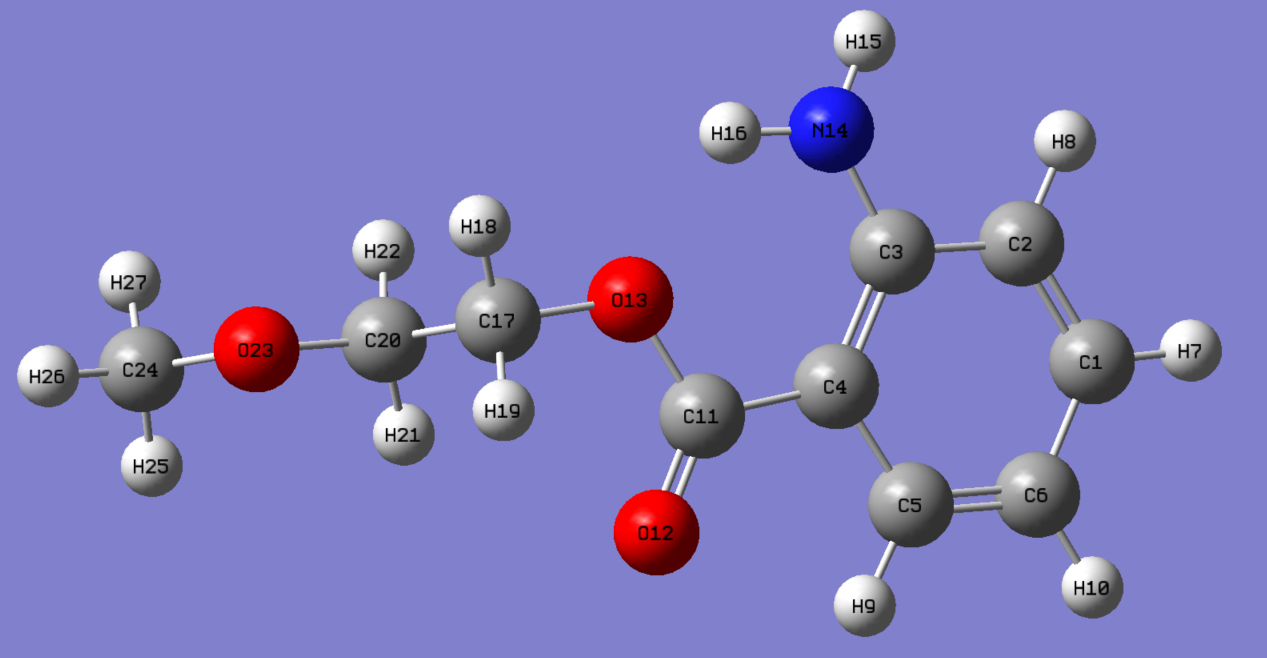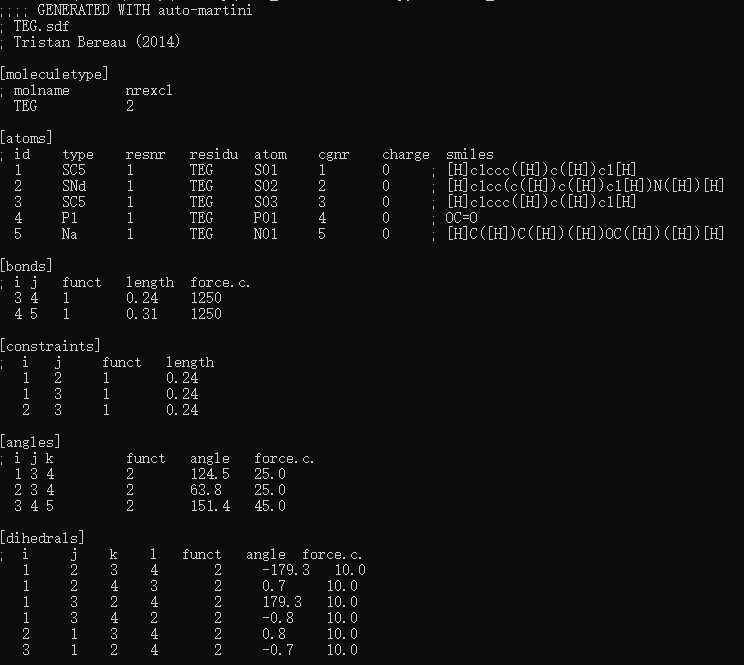在文献Tristan Bereau, Kurt Kremer; Automated Parametrization of the Coarse-Grained Martini Force Field for Small Organic Molecules; J. Chem. Theory Comput. 11(6):2783-2791, 2015; 10.1021/acs.jctc.5b00056中提出了自动将小分子划分为Martini珠子的方法, 作者还提供了一个python脚本. 这里简单介绍下它的使用方法.
安装
- 首先从github下载
auto-martini程序包放到合适目录
- 下载Windows版的anaconda2. 注意, 这里要选择python2.7版本的, 因为
auto-martini是用python2.7写的, 不兼容python3之后的语法
- 安装完anaconda之后, 以管理员身份运行anaconda, 进入
auto-martini包所在位置
- 安装
auto-martini所依赖的四个程序包
<div class="highlight"><pre style="line-height:125%"><span style="color:#A2F">pip</span> install numpy
<span style="color:#A2F">pip</span> install beautifulsoup
<span style="color:#A2F">pip</span> install requests
<span style="color:#A2F">conda</span> create <span style="color:#666">-c</span> rdkit <span style="color:#666">-n</span> my-rdkit-env rdkit</pre></div>安装完之后, 就可以使用了.
使用方法
命令
<div class="highlight"><pre style="line-height:125%"><span style="color:#A2F">python</span> auto-martini [-h] (--sdf SDF | <span style="color:#666">--smi</span> SMI) <span style="color:#666">--mol</span> MOLNAME [--xyz XYZ] [--gro GRO] [--verbose] [--fpred]</pre></div>说明
--sdf和--smi: 输入文件, 指定其中一个就可以. 可以使用openbabel将pdb或其他格式的文件转化为sdf或者smi文件.
--mol: 必须选项, 输出文件中残基的名称
--xyz, --gro: 可选的输出文件
--verbose, --fpred: 无法找到符合的参数时, 使用按原子或按片段判别珠子的方法, 准确度较差
示例
使用Gaussview画出想要的小分子

可以直接保存为sdf文件, 但好像Gaussview生成的sdf文件在auto-martini中使用会出错(未详细考察), 所以我们保存为pdb文件, 再用openbabel转换为sdf文件.
将该文件放到auto-martini目录下. 执行
<div class="highlight"><pre style="line-height:125%"><span style="color:#A2F">python</span> auto_martini <span style="color:#666">--sdf</span> TEG.sdf <span style="color:#666">--mol</span> TEG <span style="color:#666">--gro</span> TEG_CG.gro</pre></div>会得到如下结果

同时生成gro文件

注意事项



